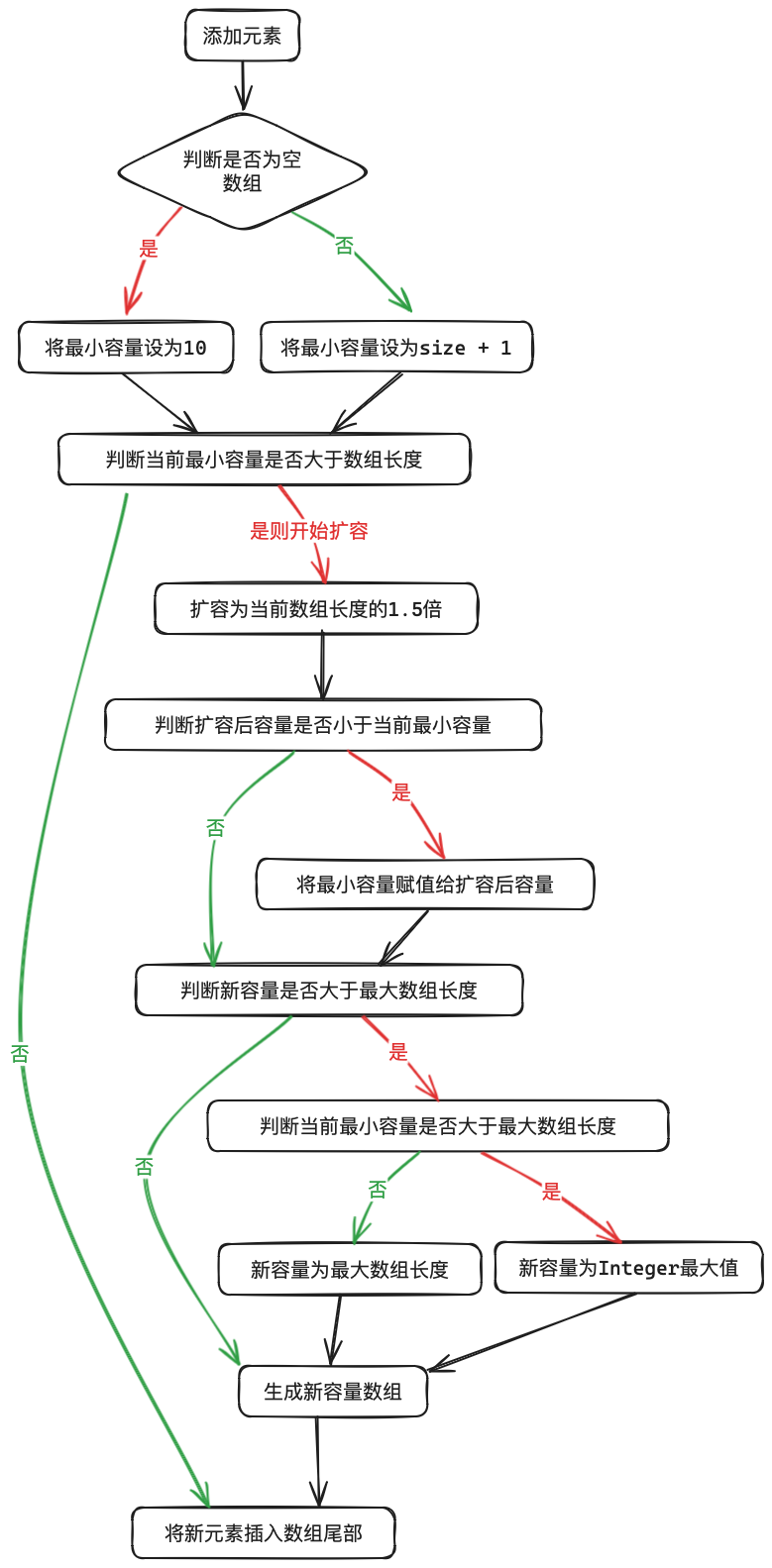ReadLikelihoodCalculationEngine 是 GATK(Genome Analysis Toolkit)中的一个接口,用于计算不同等位基因(haplotypes 或 alleles)下的测序读数的似然值。这些似然值在变异检测过程中起着关键作用,帮助确定哪些等位基因更可能是真实的遗传变异。
主要功能
ReadLikelihoodCalculationEngine 的主要功能是根据给定的测序读数数据、参考序列以及可能的等位基因来计算每个读数在每种可能的等位基因下的似然值。这些似然值可以帮助识别和过滤出真实的变异。
主要方法
computeReadLikelihoods:计算每个读数在每个候选等位基因下的似然值。输出: 返回 AlleleLikelihoods<GATKRead, Haplotype> 对象,包含读数与等位基因的似然值矩阵。
使用场景
ReadLikelihoodCalculationEngine 在许多 GATK 的变异检测管道中扮演重要角色,特别是在体细胞突变检测(如 Mutect2)或常规的 SNP/Indel 变异检测中。
实现类:

FlowBasedAlignmentLikelihoodEngine源码
package org.broadinstitute.hellbender.tools.walkers.haplotypecaller;import htsjdk.samtools.SAMFileHeader;
import org.apache.commons.math3.util.Precision;
import org.apache.logging.log4j.LogManager;
import org.apache.logging.log4j.Logger;
import org.broadinstitute.hellbender.exceptions.GATKException;
import org.broadinstitute.hellbender.utils.Utils;
import org.broadinstitute.hellbender.utils.genotyper.*;
import org.broadinstitute.hellbender.utils.haplotype.Haplotype;
import org.broadinstitute.hellbender.utils.read.*;
import org.broadinstitute.hellbender.utils.haplotype.FlowBasedHaplotype;import java.util.*;
import java.util.concurrent.Callable;
import java.util.concurrent.ExecutionException;
import java.util.concurrent.ForkJoinPool;
import java.util.function.ToDoubleFunction;
import java.util.stream.IntStream;/*** Flow based replacement for PairHMM likelihood calculation. Likelihood calculation all-vs-all flow based reads* and haplotypes.** see {@link #haplotypeReadMatching(FlowBasedHaplotype, FlowBasedRead)}*/
public class FlowBasedAlignmentLikelihoodEngine implements ReadLikelihoodCalculationEngine {public static final double MAX_ERRORS_FOR_READ_CAP = 3.0;public static final double MAX_CATASTROPHIC_ERRORS_FOR_READ_CAP = 2.0;// for the two most common probability values, we pre-compute log10 to save runtime.public static final double COMMON_PROB_VALUE_1 = 0.988;public static final double COMMON_PROB_VALUE_2 = 0.001;public static final double COMMON_PROB_VALUE_1_LOG10 = Math.log10(COMMON_PROB_VALUE_1);public static final double COMMON_PROB_VALUE_2_LOG10 = Math.log10(COMMON_PROB_VALUE_2);private double log10globalReadMismappingRate;private final double expectedErrorRatePerBase;private final boolean symmetricallyNormalizeAllelesToReference;private static final int ALIGNMENT_UNCERTAINTY = 4;final FlowBasedAlignmentArgumentCollection fbargs;private final Logger logger = LogManager.getLogger(this.getClass());private final boolean dynamicReadDisqualification;private final double readDisqualificationScale;private ForkJoinPool threadPool;/*** Default constructor* @param fbargs - arguments* @param log10globalReadMismappingRate - probability for wrong mapping (maximal contribution of the read to data likelihood)* @param expectedErrorRatePerBase - the expected rate of random sequencing errors for a read originating from its true haplotype.*/public FlowBasedAlignmentLikelihoodEngine(final FlowBasedAlignmentArgumentCollection fbargs,final double log10globalReadMismappingRate,final double expectedErrorRatePerBase,final boolean dynamicReadDisqualification, final double readDisqualificationScale) {this.fbargs = fbargs;this.log10globalReadMismappingRate = log10globalReadMismappingRate;this.expectedErrorRatePerBase = expectedErrorRatePerBase;this.readDisqualificationScale = readDisqualificationScale;this.dynamicReadDisqualification = dynamicReadDisqualification;this.symmetricallyNormalizeAllelesToReference = true;if ( this.fbargs.flowLikelihoodParallelThreads > 0 ) {threadPool = new ForkJoinPool(this.fbargs.flowLikelihoodParallelThreads);}}/*** Read/haplotype likelihood calculation for all samples* @param samples the list of targeted samples.* @param perSampleReadList the input read sets stratified per sample.** @param filterPoorly - if the poorly modeled reads should be removed* @return*/public AlleleLikelihoods<GATKRead, Haplotype> computeReadLikelihoods(final List<Haplotype> haplotypeList,final SAMFileHeader hdr,final SampleList samples,final Map<String, List<GATKRead>> perSampleReadList, final boolean filterPoorly) {return computeReadLikelihoods(haplotypeList, hdr, samples, perSampleReadList,filterPoorly, true);}/*** Read/haplotype likelihood calculation for all samples* @param samples the list of targeted samples.* @param perSampleReadList the input read sets stratified per sample.** @param filterPoorly - if the poorly modeled reads should be removed* @param normalizeLikelihoods - if the likelihood of each read should be normalized to the highest* @returnd*/public AlleleLikelihoods<GATKRead, Haplotype> computeReadLikelihoods(final List<Haplotype> haplotypeList,final SAMFileHeader hdr,final SampleList samples,final Map<String, List<GATKRead>> perSampleReadList,final boolean filterPoorly, final boolean normalizeLikelihoods) {Utils.nonNull(samples, "samples is null");Utils.nonNull(perSampleReadList, "perSampleReadList is null");Utils.nonNull(haplotypeList, "haplotypeList is null");final AlleleList<Haplotype> haplotypes = new IndexedAlleleList<>(haplotypeList);// Add likelihoods for each sample's reads to our resultfinal AlleleLikelihoods<GATKRead, Haplotype> result = new AlleleLikelihoods<>(samples, haplotypes, perSampleReadList);final int sampleCount = result.numberOfSamples();for (int i = 0; i < sampleCount; i++) {computeReadLikelihoods(result.sampleMatrix(i), hdr);}if (normalizeLikelihoods) {result.normalizeLikelihoods(log10globalReadMismappingRate, symmetricallyNormalizeAllelesToReference);}if (filterPoorly) {filterPoorlyModeledEvidence(result, dynamicReadDisqualification, expectedErrorRatePerBase, readDisqualificationScale);}return result;}/** Calculate minimal likelihood that reasonably matching read can get. We divide errors into "expected", e.g.* hmer indels without 0->1/1->0 errors. Those on average occur with expectedErrorRate and "catastrophic' e.g.* 1->0 and 0->1 errors (or large hmer indels). Those occur with probability fbargs.fillingValue.* If the read has more than 3 expected and more than 2 "catastrophic" errors it will probably be deemed unfit to the* haplotype** @param expectedErrorRate error rate for expected errors.* @return minimal likelihood for the read to be considered not poorly modeled*/@Overridepublic ToDoubleFunction<GATKRead> log10MinTrueLikelihood(final double expectedErrorRate, final boolean capLikelihoods) {final double log10ErrorRate = Math.log10(expectedErrorRate);final double largeEventErrorRate = Math.max(fbargs.fillingValue, 0.000001); // error rate for non-hmer/snv errors that are not seq. errors.final double log10catastrophicErrorRate = Math.log10(largeEventErrorRate);return read -> {final double maxErrorsForRead = capLikelihoods ? Math.max(MAX_ERRORS_FOR_READ_CAP, Math.ceil(read.getLength() * expectedErrorRate)) : Math.ceil(read.getLength() * expectedErrorRate);final double maxCatastrophicErrorsForRead = capLikelihoods ? Math.max(MAX_CATASTROPHIC_ERRORS_FOR_READ_CAP, Math.ceil(read.getLength() * largeEventErrorRate)) :Math.ceil(read.getLength() * largeEventErrorRate);return maxErrorsForRead * log10ErrorRate + maxCatastrophicErrorsForRead * log10catastrophicErrorRate;};}/*** Compute read likelihoods for a single sample* @param likelihoods Single sample likelihood matrix* @param hdr SAM header that corresponds to the sample*/protected void computeReadLikelihoods(final LikelihoodMatrix<GATKRead, Haplotype> likelihoods,final SAMFileHeader hdr) {final List<FlowBasedRead> processedReads = new ArrayList<>(likelihoods.evidenceCount());final List<FlowBasedHaplotype> processedHaplotypes = new ArrayList<>(likelihoods.numberOfAlleles());// establish flow order based on the first evidence. Note that all reads belong to the same sample (group)final FlowBasedReadUtils.ReadGroupInfo rgInfo = (likelihoods.evidenceCount() != 0)? FlowBasedReadUtils.getReadGroupInfo(hdr, likelihoods.evidence().get(0)): null;final String flowOrder = (rgInfo != null)? rgInfo.flowOrder.substring(0, fbargs.flowOrderCycleLength): FlowBasedReadUtils.findFirstUsableFlowOrder(hdr, fbargs);//convert all reads to FlowBasedReads (i.e. parse the matrix of P(call | haplotype) for each read from the BAM)for (int i = 0 ; i < likelihoods.evidenceCount(); i++) {final GATKRead rd = likelihoods.evidence().get(i);final FlowBasedRead fbRead = new FlowBasedRead(rd, flowOrder, rgInfo.maxClass, fbargs);fbRead.applyAlignment();processedReads.add(fbRead);}for (int i = 0; i < likelihoods.numberOfAlleles(); i++){final FlowBasedHaplotype fbh = new FlowBasedHaplotype(likelihoods.alleles().get(i), flowOrder);processedHaplotypes.add(fbh);}if (fbargs.trimToHaplotype) {//NOTE: we assume all haplotypes start and end on the same place!final int haplotypeStart = processedHaplotypes.get(0).getStart();final int haplotypeEnd = processedHaplotypes.get(0).getEnd();for (int i = 0; i < processedReads.size(); i++) {final FlowBasedRead fbr = processedReads.get(i);final int readStart = fbr.getStart();final int readEnd = fbr.getEnd();final int diffLeft = haplotypeStart - readStart;final int diffRight = readEnd - haplotypeEnd;//It is rare that this function is applied, maybe just some boundary cases//in general reads are already trimmed to the haplotype starts and ends so diff_left <= 0 and diff_right <= 0fbr.applyBaseClipping(Math.max(0, diffLeft), Math.max(diffRight, 0), true);}}for (int i = 0; i < likelihoods.numberOfAlleles(); i++){final FlowBasedHaplotype fbh = processedHaplotypes.get(i);if ( threadPool != null ) {final int haplotypeIndex = i;Callable<Void> callable = () -> {IntStream.range(0, likelihoods.evidenceCount()).parallel().forEach(j -> {final double likelihood = fbargs.exactMatching ? haplotypeReadMatchingExactLength(fbh, processedReads.get(j)) : haplotypeReadMatching(fbh, processedReads.get(j));likelihoods.set(haplotypeIndex, j, likelihood);});return null;};try {threadPool.submit(callable).get();} catch (InterruptedException | ExecutionException e) {throw new RuntimeException(e);}} else {for (int j = 0; j < likelihoods.evidenceCount(); j++) {final double likelihood = fbargs.exactMatching ? haplotypeReadMatchingExactLength(fbh, processedReads.get(j)) : haplotypeReadMatching(fbh, processedReads.get(j));likelihoods.set(i, j, likelihood);}}}}/*** Aligns single read to a single haplotype. The alignment process is based on the assumption that the errors are only* changes in the flow calls. Thus, the length of the haplotype in flow space should be equal to the length of the read* in the flow space (on the region where the read aligns).** Example: align read ACGGT* to haplotype GACG-TA. In flow space we see that the overlapping sequences ACGGT and ACGT are of the same length* and we just need to calculate P(R|H) = \prod P(Ri | Hi) for ith flow. Note that the flow matrix of the flow based* read {@link FlowBasedRead} allows for trivial calculation of this product.** As an additional optimization we note that almost always the interval to be aligned corresponds to the overlap* of the read and the haplotype to the reference. We allow for some uncertainty in this, especially when the read* falls inside the deletion in the haplotype relative to the reference.** @param haplotype FlowBasedHaplotype single haplotype* @param read FlowBasedRead single read (trimmed to the haplotype)* @return a score for the alignment of the read to the haplotype. The higher the score the "better" the alignment* normally, scores will be negative.* @throws GATKException*/public double haplotypeReadMatching(final FlowBasedHaplotype haplotype, final FlowBasedRead read) throws GATKException {if (read.getDirection() != FlowBasedRead.Direction.REFERENCE ) {throw new GATKException.ShouldNeverReachHereException("Read should be aligned with the reference");}if (!read.isBaseClipped() && fbargs.trimToHaplotype) {throw new GATKException.ShouldNeverReachHereException("Reads should be trimmed to the haplotype");}if (!read.isValid()) {return Double.NEGATIVE_INFINITY;}// the read is assumed to be trimmed to the haplotype by ReadThreadingAssembler.finalizeRegion, the region of the// haplotype to be aligned is estimated by finding the points on the haplotypes that align to the start and the end// of the read on the referencefinal int haplotypeStart = ReadUtils.getReadIndexForReferenceCoordinate(haplotype.getStart(), haplotype.getCigar(),read.getTrimmedStart()).getLeft();final int haplotypeEnd = ReadUtils.getReadIndexForReferenceCoordinate(haplotype.getStart(), haplotype.getCigar(),read.getTrimmedEnd()).getLeft();final int haplotypeLength = haplotypeEnd - haplotypeStart;final int readLength = read.seqLength();//in case there is a deletion on the haplotype and hte read falls inside the deletion (thus length of the read is// longer than the length of the trimmed haplotype:// Reference: GACACACACACT// Read: ACACT// Haplotype GACAC------T// In this case the read (that is not informative) is aligned inside the deletion and thus if we clip the haplotype// to the start position of the read will not support it (haplotype: T, read: ACACT), so in cases we see that the resulting// haploype length is shorter than the resulting read length we extend the "trimmed haplotype" by this length and// also allow more uncertainty for the actual starting position of the alignmentfinal int uncertainty = Math.max(readLength - haplotypeLength,0);final int leftClip = Math.max(haplotypeStart-uncertainty,0);final int rightClip = Math.max(haplotype.length()-haplotypeEnd-1-uncertainty,0);if ((leftClip >= haplotype.length() ) || ( rightClip >= haplotype.length())) {return Double.NEGATIVE_INFINITY;}int [] leftClipping = haplotype.findLeftClipping(leftClip);int clipLeft = leftClipping[0];final int leftHmerClip = leftClipping[1];leftClipping = haplotype.findRightClipping(rightClip);int clipRight = leftClipping[0];final in










